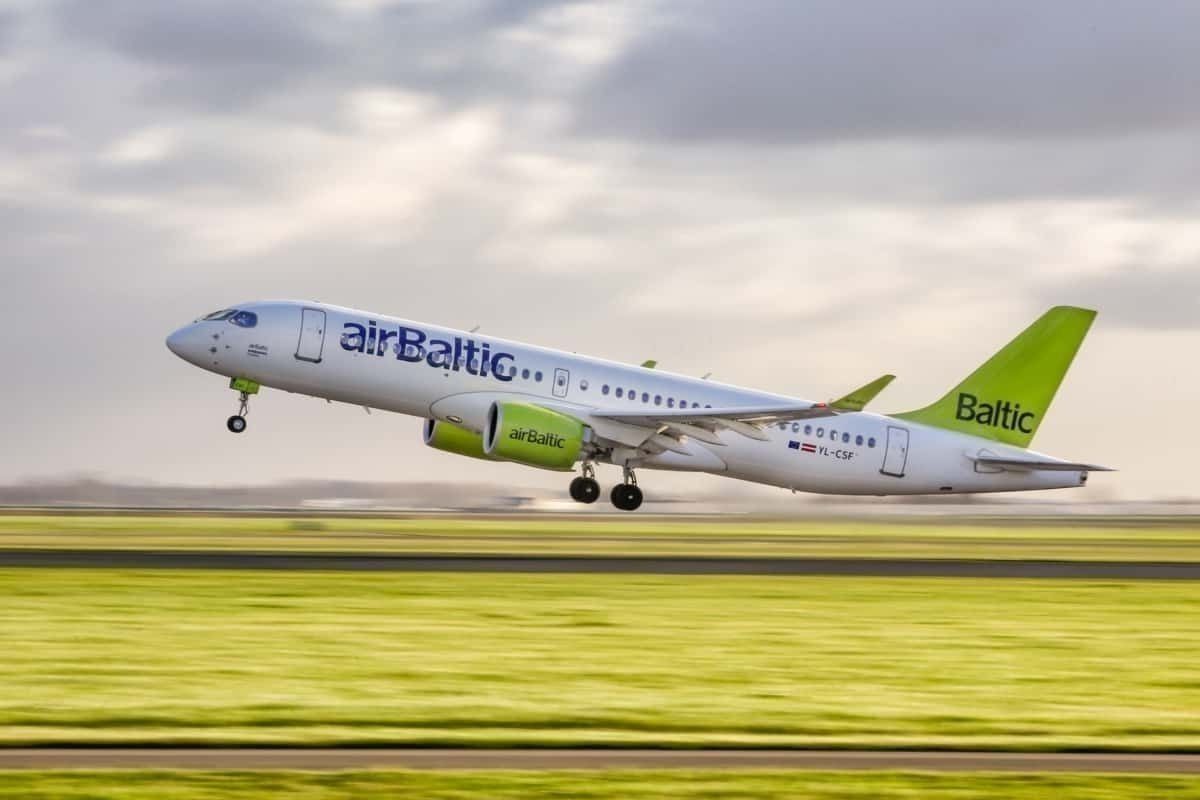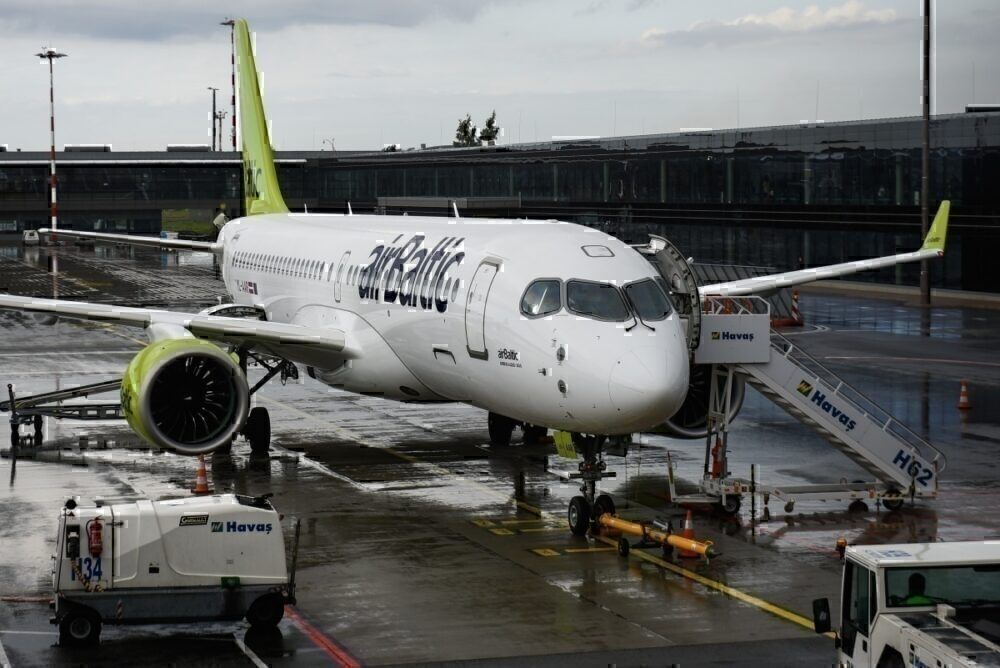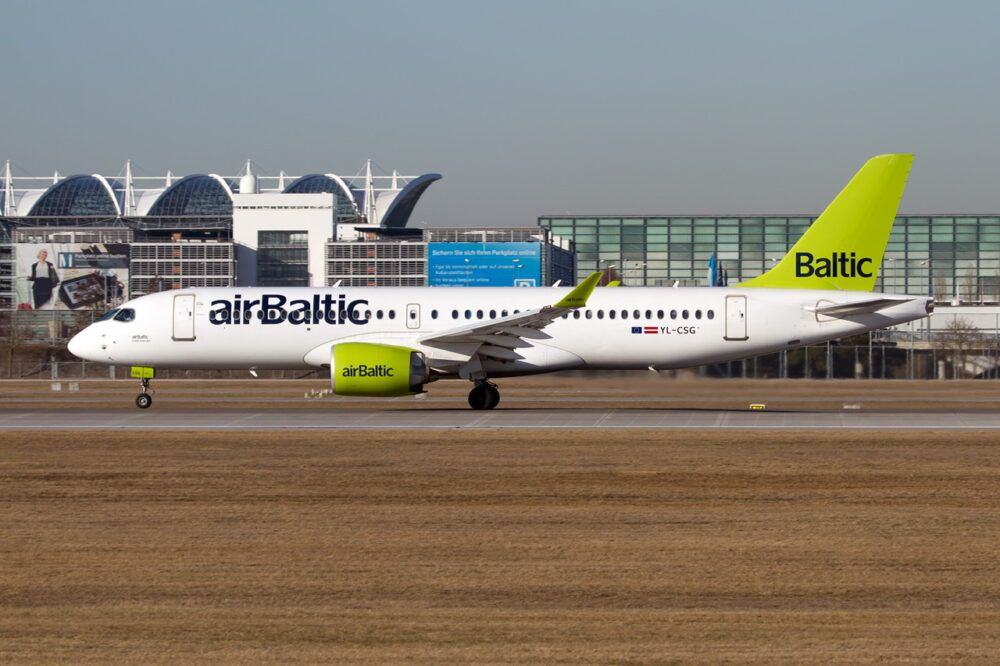Martin Gauss, CEO of airBaltic, said on Wednesday that he believes his airline's Airbus A220 is the perfect aircraft to operate in a post-pandemic market. Its high-efficiency coupled with right capacity has "changed airBaltic completely," and the carrier is still looking to increase its fleet to at least 50 by 2025.
Aircraft that has exceeded all expectations
In an interview with CAPA's Chairman Peter Harbison on Wednesday, airBaltic's CEO Martin Gauss waxed lyrical about the benefits of the Airbus A220. Mr Gauss said that the plane, initially designed as the Bombardier CSeries, had changed airBaltic completely. It has exceeded all expectations the airline had when first ordering the plane in 2012.
airBaltic's CEO is also firmly convinced that the A220 is the perfect plane as the market will begin to ease out from under the shadow of the pandemic and the past year. Its high fuel-efficiency - up to 20% better fuel-burn than other aircraft in the same range - coupled with a comfortable medium-haul range of up to seven hours will see the carrier bounce back quickly along with demand.
The pre-pandemic trend of passengers seeking convenience and value for money is also likely to reignite once things go back to "normal." This means that a schedule with more frequent departures offering greater flexibility will most likely be preferable when welcoming passengers back on board.
Stay informed: Sign up for our daily aviation news digest.
Environmental concerns will also make passengers opt for one direct flight, as opposed to connecting via hubs. While reducing emissions may have fallen off the immediate agenda as airlines struggle to survive, the topic is sure to come back in full force once demand picks back up. All of this speaks to the advantage of smaller capacity aircraft.
Business and ultra-low-cost economy combined
The smaller variant of the A220-100 can seat between 108 and 133 passengers. The larger variant, the A220-300 seats between 130 and 160 people. airBaltic operates the latter, with nine business seats in a 1-2 set-up and the remainder economy seats in a 2-3 configuration.
"If you have very, very high passenger numbers on a city pair, you would rather have 239 seater aircraft, because then your cost per seat go down. But right now we don't see that. And I think for quite a while, these very high passenger numbers on point to point are not there, and therefore I'd rather go with 145 seater. I'm very happy having a business class and an ultra low cost economy combined in one aircraft," Mr Gauss said in Wednesday's interview, seen by Simple Flying.
Fifty planes in the Baltics by 2025
airBaltic has a total of 23 Airbus A220s in its fleet at the moment. Before the end of the week, it will have taken delivery of two more. By 2025, it intends to have a fleet of 50, which corresponds to the firm orders it has for the plane. These will all be based at the carrier's hub in Riga, with a couple of exceptions for the other Baltic capitals of Vilnius and Tallin.
Furthermore, airBaltic has options for another 30 of the A220. Any planes the carrier will end up taking beyond the initial 50 will be stationed elsewhere in the Nordics, operating point-to-point routes.
Before COVID hit, Airbus made estimates that there would be a need for up to 7,000 A220s in the coming two decades. While that forecast may have been clouded somewhat and pushed back a few years, it is not entirely unthinkable that the crisis will have made airlines more inclined to favor lesser capacity jets for future orders.
What do you think of the A220 coming out of the crisis? Let us know in the comments.



